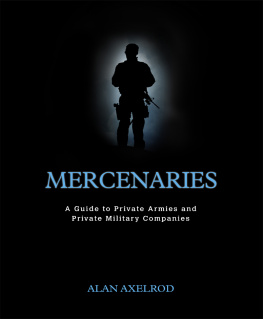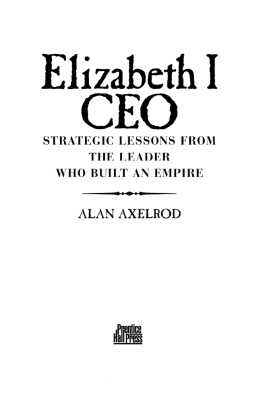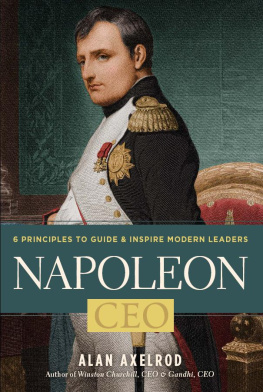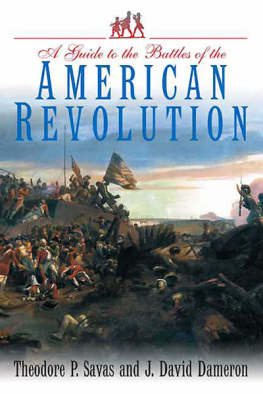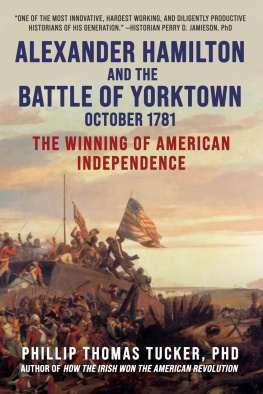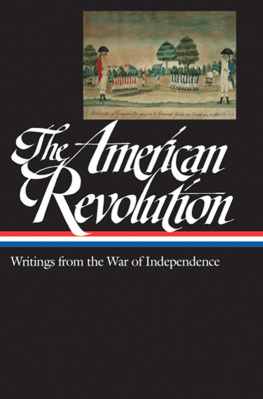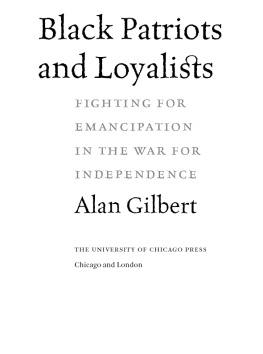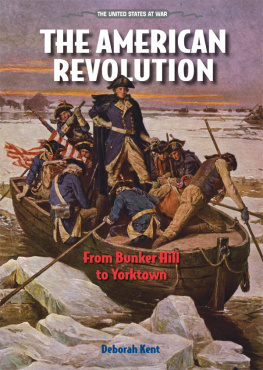W HEN A MARRIED COUPLE GETS A DIVORCE AND CANNOT AGREE AMICA bly on the terms, they plead their case in court before a judge. The law provides a menu of reasonsgroundssuch as adultery, desertion, or domestic violence. Sometimes something or some things on this menu adequately describe the grounds. Usually, though, the reasons are more complicated than what can be captured in a word or two. The legal decision rarely reflects such human complexity. But its a necessary place to start. will go deeper behind Americas divorce from Crown and Parliament, but let us begin with the simplest, most direct publicly stated reasons for the breakup.
A T YRANT K ING R EALLY ?
In 1776, the Continental Congress tasked Thomas Jefferson with writing a brief document, the Declaration of Independence, for the purpose of pleading the colonial case for independence. As Jefferson himself acknowledged, a decent respect to the opinions of mankind requires [declaring] the causes which impel the separation.
The fact is that few revolutions begin with a declaration. Most start with despair and desperation. They begin as an emotional revolt against urgent need, wrong, or oppression. Consider the French Revolution of 17891799. The vast majority of the French were hungry, and the nation under Louis XVI could not or would not feed them. Although there was a middle class rapidly rising in France, they were mostly excluded from political power. Time for change. Or take the Russian Revolutions of 1917. The vast majority of Russians were hungry, and the nation under Czar Nicholas II could not or would not feed them. The rural agricultural working class (the peasants) and the urban industrial working class (the proletariat) were excluded from political power. Time for a change.
Of course, both the French and the Russian revolutions were far more complicated than this, but the raw fuel for both was the same. People were suffering. People were dying and therefore urgently desperate. They resolved to fight for survival. An automobile built around a traditional internal combustion engine is far more complex than the gasoline that drives it, but without the gasoline, the car gets nowhere. In late-eighteenth-century France and early-twentieth-century Russia, the gasoline of revolution was despair and desperation.
And what of colonial America in the run-up to 1776?
There were economic problems. As we will see in , the Boston Massacre started out as a labor riot during an economic depression. On the colonial frontier, life was pretty rough. Yet for many desperate European immigrants, colonial America figured as a kind of promised land, a New World where life looked to be better than in the Old. The historical record suggests that hunger, much less starvation, was not a critical social problem in eighteenth-century colonial America. So, we have to probe elsewhere for a cause to rebel.
We know that King George III, his ministers, and the conservative faction in Parliament were politically tone deaf and often unfair when it came to the American colonies. They were often stubborn, unresponsive, and just plain thick-headed.
Now, there would come a time, as we will see, in which the word tyranny was bandied about, and Jefferson, in the 1776 Declaration, accused King George III of committing repeated injuries and usurpations, all having in direct object the establishment of an absolute tyranny over these statesthat is, America. Was this accusation justified? As the word is usually understood, a tyrant is a cruel, oppressive, and evil ruler. Does this describe George III? Was he (take your pick) a Nero, a Caligula, an Ivan the Terrible, a Vlad the Impaler, a Hitler, a Mugabe, a Mao Zedong, an Idi Amin, a Pol Pot, a Saddam Husseinor even a Louis XVI or Nicholas II?
Compare George III to the monarchs ruling other major colonial powers of the time, Spain and France. Unlike Spains Charles III (17161788) or Frances Louis XVI (17541793), George III was substantially constrained by a strong national constitution (a body of laws and traditions rather than a single document) founded on the Magna Carta of 1215. Add to this a powerful liberal tradition of common law deeply ingrained in the English culture.

This 1859 painting by Johannes Adam Simon Oertel depicts the Sons of Liberty pulling down a statue of King George III in New York City on July 9, 1776, after Washington read the Declaration of Independence to locals. The statue was pulled down, but the work was performed by slaves at the direction of their owners. Eyewitnesses recall only soldiers and the rougher sort of civilians gathered to watch. There were no Native Americans present. WIKIMEDIA COMMONS
The American Revolution began with the Battles of Lexington and Concord on April 19, 1775. Yet it was not until July of 1776 that the decision for independence was made. For more than a year, the British colonies were in violent armed revolt while most Americans continued to feel toward George III a degree of loyalty and perhaps even affection. At least, they did not hate him. Even after the Continental Congress approved the Declaration of Independence and, on July 4, 1776, the colonies ratified it, many Americans did not agree with the long list of sins Jefferson tallied against the British monarch. Whence, then, the decision to embark on a bitter and violent divorce?
A BSENCE
To begin, there was the fact of the Atlantic Ocean, which separated Britain from its American colonies. A one-way trip in 1776 took a minimum of six weeks and could take as long as three monthsif you survived the perils of the sea and dangers posed by infectious diseases in the close quarters of a small vessel. Not only was the crossing time-consuming and hazardous, it was also costly, well beyond the means of most travelers. If people and goods moved between London and the colonial American capitals slowly and expensively, so did letters and documents. The immutable fact of geography made remotely governing colonies difficult. From the perspective of the colonial subject, government was chronically unresponsive, representation was nonexistent, and beneficent authority seemed, in a word, absent. Crown and Parliament were absentee landlords.
Doubtless, the British government looked on the American colonies as the tail of the British bulldog. But, over the years, as Americans born in America came to outnumber those who had immigrated from Britain, the tail began to wag the dog. It is natural to feel affinity for your place of birth, especially if you have never even seen the place of your ancestors birth.
So, geography alonethe intractable physical realities of space and timeprovided a source of fuel for revolution. Yet, for a long time, Crown and Parliament were content to be undemanding absentee landlords. They reaped the rewards of possession of the American colonies, sources of raw materials to import and a market for manufactured goods to export, without interfering in colonial affairs. British colonial policy was what historians have labeled salutary neglect. Profits were made, taxes were collected, and the colonists were left alone to govern themselves.
As we will see in the next chapter, salutary neglect began to change in a series of wars fought from the late seventeenth century through the middle of the eighteenth in North America, mainly between Europes longtime rivals, Britain and France. These included King Williams War (16891697), Queen Annes War (17021713), and King Georges War (17441748). Each was the North American theater of a European-based conflict: the War of the League of Augsburg (or Nine Years War, 16881697), the War of the Spanish Succession (17011714), and the War of the Austrian Succession (17401748), respectively. In Europe, these conflicts culminated in the Seven Years War (17561763), the North American theater of which was called the French and Indian War (17541763).


